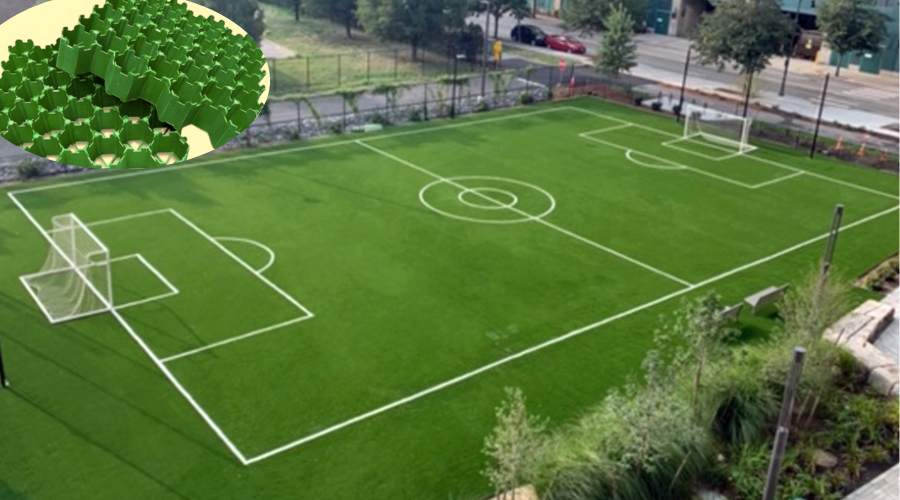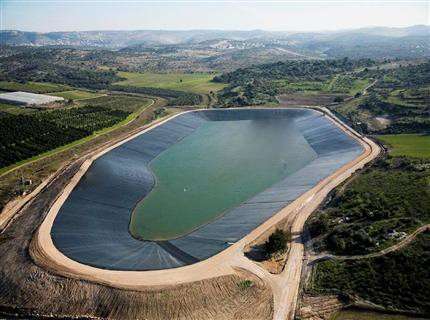
Blog

Sep 28,2023
What are the Applications of Geosynthetic Grass Grids in Sports Fields?
Sports fields and the technologies used to maintain and improve them have evolved tremendously. The usage of geosynthetic grass grids is one example of a popular innovation. These grids have numerous advantages over regular turf. This essay will examine the various applications of geosynthetic grass grids in sports grounds and why they have significantly changed sports turf management.
Applications of Geosynthetic Grass Grids in Sports Fields
The applications of geosynthetic grass grids in sports fields are nothing short of revolutionary. Let's delve deeper into the multifaceted ways in which these grids are transforming the world of sports turf:
1. Enhancing Stability and Durability
Geosynthetic grass grids support natural turf by providing a sturdy and robust substrate. They distribute weight effectively, minimizing soil compaction even in high-traffic locations like football fields, soccer pitches, and baseball diamonds. This improved stability reduces surface imperfections and considerably increases lawn durability. Athletes can confidently give their all, knowing that the playing surface will remain consistent and safe throughout the season.
2. Drainage Excellence
Proper drainage is essential for sports field upkeep. Geosynthetic grass grids are cleverly constructed to excel at water management. They have an extensive network of linked cells that quickly drain rainwater away from the surface. This incredible drainage capability means no more waterlogged fields, muddy quagmires, or dreaded game cancellations owing to bad field conditions. What was the result? Reduced injuries, less downtime, and a longer turf lifespan.

3. Reducing Maintenance Costs
Sports field upkeep costs can be high, but geosynthetic grass grids are cost-effective. They prevent wear and tear on the turf by uniformly dispersing weight and decreasing compaction. This means less expensive repairs and replacements are required, ultimately saving sports facility managers and organizations significant money in the long term. Choosing geosynthetic grass grids is an investment in the field's quality and the project's financial sustainability.
4. Versatility Across Sports
The adaptability of geosynthetic grass grids is one of its most notable characteristics. These grids can be tailored to match the specific needs of various sports fields. Geosynthetic grass grids can be adjusted to particular turf qualities for a soccer field or better playability for a golf course. As a result, performance is improved without sacrificing quality. Sports facility managers can confidently choose these grids, knowing they provide variety without sacrificing quality.
5. Sustainability and Eco-Friendliness
Geosynthetic grass grids shine as an environmentally beneficial option in an era where sustainability is crucial. They promote healthy soil and grass development while decreasing the need for hazardous chemicals such as fertilizers and pesticides. Furthermore, these grids improve soil aeration and moisture retention, contributing to environmentally friendly sports field management procedures. Sports fields can actively engage in environmental conservation initiatives using geosynthetic grass grids.

6. Improved Playability
Consistency and a safe playing surface are essential for athletes. Geosynthetic grass grids provide precisely that. They improve playability by preventing surface imperfections and keeping a uniform surface. Whether a soccer player dribbling the ball accurately or a golfer teeing off confidently, geosynthetic grass grids' enhanced playability transforms sporting fields into high-performance arenas.
FAQs
1. Are geosynthetic grass grids suitable for all types of sports fields?
Yes, Geosynthetic grass grids exhibit adaptability, allowing for tailoring to meet the specific demands of various sports fields.
2. Do geosynthetic grass grids require specialized maintenance?
While they reduce maintenance needs, regular upkeep is necessary to ensure optimal performance and longevity.
3. Can geosynthetic grass grids withstand harsh weather conditions?
Geosynthetic grass grids are designed to withstand various weather conditions, including heavy rainfall and extreme temperatures.
4. Are geosynthetic grass grids environmentally friendly?
Yes, these grids promote sustainability by reducing chemicals and improving soil health.
5. How do geosynthetic grass grids affect athlete performance?
Geosynthetic grass grids provide a stable and even playing surface, enhancing athlete performance and safety.
Conclusion
Consistency and a safe playing surface are essential for athletes. Geosynthetic grass grids provide precisely that. They improve playability by preventing surface imperfections and keeping a uniform surface. Whether a soccer player dribbling the ball accurately or a golfer teeing off confidently, geosynthetic grass grids' enhanced playability transforms sporting fields into high-performance arenas.







